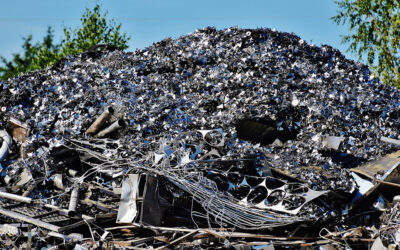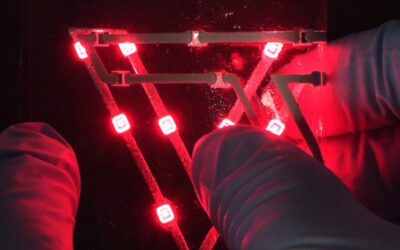Silicon Dreams
Imagine inventing a new allotrope of silicon that still functioned equally well to the diamond form of silicon as a semiconductor making it suitable for microelectronics but also provided those much desired properties the diamond form of silicon has so far been unable to deliver to enable the development of improved performance solar cells, higher efficiency light emitting diodes and lithium ion batteries with better cycle-life and safety requirements.
Envisage in the case of silicon solar cells a new allotrope of silicon able to offer a direct bandgap of around 1.3eV. This would be the ideal value that optimizes the photon-to-electron conversion efficiency for a single p-n junction to meet the theoretical Shockley-Queisser limit of 33.7%. This new allotrope of silicon with its direct bandgap would also enable the required high efficiency electron-hole radiative recombination required to drive the next generation of light emitting diodes. Conceive also of anodes for lithium ion batteries made of this new allotrope of silicon that undergo minimal volume changes and mechanical failure on electrochemical insertion and de-insertion of lithium. This property would help solve the charging-discharging cycle-life and safety problems that prevent the champion volumetric capacity of silicon from being realized in practical lithium ion batteries.
Threat to Silicon’s Diamond Throne
Materials researchers have long dreamed about this new allotrope of silicon but its discovery seemed just too much to expect. However, in my forty five years of practicing materials chemistry I have discovered that you never-say-never about so-called “non-existent” materials. Nowhere is this existential paradigm better seen than with a very recent report of a new allotrope of silicon, which is formulated as Si24 and that sure enough appears to provide all of the aforementioned desirable properties demanded of silicon in one structure. This breakthrough in materials synthesis points the way to a new era of advanced silicon devices that were never thought possible before [1].
![Figure 1 Illustration of the structure and compositional change in the vacuum thermal transformation of Na4Si24 (left) to Si24 (right) where sodium atoms are shown in purple and silicon atoms in yellow [1].](https://www.advancedsciencenews.com//wp-content/uploads/2015/07/structural-composition-changes-300x119.jpg)
Figure 1 Illustration of the structure and compositional change in the vacuum thermal transformation of Na4Si24 (left) to Si24 (right) where sodium atoms are shown in purple and silicon atoms in yellow [1].
![Figure 2 Illustration of how vacuum thermal removal of Na from Na4Si24 to form Si24 has a minimal effect on the lattice parameters [1].](https://www.advancedsciencenews.com//wp-content/uploads/2015/07/vacuum-thermal-removal.jpg)
Figure 2 Illustration of how vacuum thermal removal of Na from Na4Si24 to form Si24 has a minimal effect on the lattice parameters [1].
![Figure 3 Comparison of the calculated absorption spectra of Si24 (blue) and diamond Si (black) with the reference air mass (AM) 1.5 solar spectral irradiance (red) [1].](https://www.advancedsciencenews.com//wp-content/uploads/2015/07/absorption-spectra-300x243.jpg)
Figure 3 Comparison of the calculated absorption spectra of Si24 (blue) and diamond Si (black) with the reference air mass (AM) 1.5 solar spectral irradiance (red) [1].
Major Challenge
Together, the extraordinary properties of Si24 outlined above, which can be enhanced and enriched by n-doping and p-doping and formation of native oxide, bode well for its future utilization in high capacity lithium ion batteries, enhanced efficiency photovoltaics and next generation light emitting diodes. Realistically, however, there seems to be much stronger evidence for the promising potential in solar cells and batteries than perhaps light emitting diodes. This is based on not finding evidence of quantified and efficient luminescence – yet. As is well appreciated, a promising theoretical band structure does not always translate to an efficient luminescent structure if non-radiative defects are difficult to minimize. Within such a low dimensional and presumed high surface area structure this could be challenging but the nanocrystal passivating ligand chemistries that have been developed could help. Various silicon clathrates have been around quite a while but have not yielded efficient photoluminscence, let alone electroluminescence, to the best of my knowledge, compared to nanocrystalline silicon. For optoelectronic devices there is concern about effective doping routes and trace residual sodium within any passivating oxide structure. Finally, a major challenge that confronts the implementation of Si24 in next generation advanced silicon-based devices is the urgency of discovering ways of scaling the reported high P,T synthesis of the material to industrially relevant proportions or indeed finding an entirely different pathway for its large-scale preparation at a cost that is competitive with the diamond form of silicon.
In view of what is at stake in trying to dethrone the diamond form of silicon, the Samurai of semiconductors, I predict the materials community will diligently work to discover creative ways of making tons of the new Si24 allotrope in the not too distant future.
- Synthesis of an Open-Framework Allotrope of Silicon, Kim, D.Y., Stefanoski, S., Kurakevych, O.O., T.A. Strobel, Nature Materials, 2015, 14, 169-173, DOI: 10.1038/NMAT4140.
Acknowledgments
GAO is Government of Canada Research Chair in Materials Chemistry and Nanochemistry. This work was supported by the Natural Sciences and Engineering Research Council of Canada (NSERC). The ideas and opinions expressed in this editorial have benefitted enormously from the critical reading, insightful feedback and writing skills of Leigh Canham, Markus Antonietti and Bob Davies. The aesthetics of this editorial have been greatly enhanced and enriched by the creative artistic skills of Chenxi Qian.
















